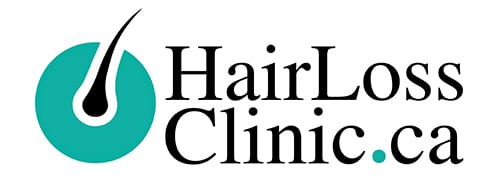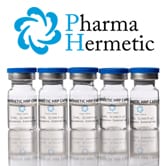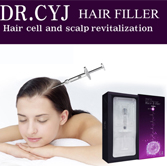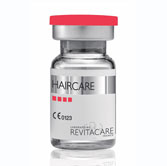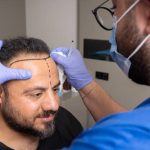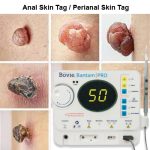Table of Contents
FEMALE HAIR LOSS TREATMENT
Female hair loss is just that — when a woman experiences unexpected, loss of hair. Generally, people shed between 50 and 100 single hairs per day. Hair shedding is part of a natural balance — some hairs fall out while others grow in. When the balance is interrupted — when hair falls out and less hair grows in — hair loss happens. Hair loss is different than hair shedding. The medical term for hair loss is “alopecia.”
Hair Growth Cycles
Hair goes through three cycles:
• The anagen phase (growing phase) can last from two years to eight years. This phase generally refers to about 85% to 90% of the hair on your head.
• The catagen phase (transition phase) is the time that hair follicles shrink and takes about two to three weeks.
• The telogen phase (resting phase) takes about two to four months. At the end of this phase, the hair falls out.
Your shorter hairs like eyelashes, arm and leg hair and eyebrows have a short anagen phase — about one month. Your scalp hair can last up to six years or even longer.
Female Hair Loss Types
Female hair loss is more complicated than men, as there is usually no single cause. Hair loss triggers range from medical conditions (as many as 30), genetics, hormones, stress, lifestyle factors, poor nutrition, pregnancy, and menopause. As a starting point, questions about thyroid issues and hormone imbalances need to be addressed.
Hair Loss Causes in women
There are many female hair loss conditions, these are the most common. Often women may experience one or a mixed forms of hair loss, usually AGA (androgenetic hair loss / female pattern hair loss) and Chronic Telogen Effluvium (CTE). Most women suffering from hair loss have one or both hair loss conditions, AGA, CTE or AGA + CTE).
TELOGEN EFFLUVIUM (TE)
If female hair loss was sudden but diffused, it could indicate telogen effluvium (TE), which is a temporary hair loss condition defined as a transitory increase in the number of hairs in the resting phase of the hair growth cycle. This condition is normally caused by surgery, major physical trauma, major psychological stress, high fever/illness, extreme weight loss, extreme diet change, childbirth, or menopause. TE usually resolves completely without any treatment over several months. The normal duration of TE is approximately 100 days (3 to 6 months) after which period the hair starts growing again.
ANDROGENETIC HAIR LOSS (AGA)
For most women suffering from hair loss, the main female hair loss is androgenetic alopecia (AGA) or female pattern baldness. This type of female hair loss is characterized by a slow and progressive diffused hair loss all over the scalp area. It is the most common form of hair loss seen in both men and women. Genetics and hormones appear to be the main causes of female pattern hair loss. Age, environment, stress, and nutrition also play a role in FPHL. Women can inherit the gene for pattern baldness from either parent. AGA hair loss is cause by hormones in both men and women. For both men and women, the specific hormone that causes hair loss is called dihydrotestosterone, or DHT. DHT is made from testosterone by an enzyme called 5-alpha reductase. It can also be made from DHEA, a hormone more common in women. DHT is found in skin, hair follicles, and the prostate. The actions of DHT and the sensitivity of hair follicles to DHT is what causes hair loss.
Some women tend to carry genes that make hair follicles susceptible to destruction due male hormone DHT. For women, besides hereditary, imbalance of hormones caused by ovarian cysts, pregnancy, taking high androgen index birth control pills, and menopause can also cause androgenetic hair loss. After menopause, hair loss is more prevalent as the sex hormone estrogen levels drop in women.
CHRONIC TELOGEN EFFLUVIUM (CTE)
Another type of female hair loss is called Telelogen Effluvium (TE). TE that lasts longer than 6 months is called chronic telogen effluvium (CTE). Women with a long history of hair shedding may be suffering from chronic telogen effluvium (CTE). CTE shows the following criteria: abrupt onset of hair loss in the beginning, duration over 6 months, precise memory of the time of onset, and positive pull test results in 4 areas of the scalp. It is characterized by abrupt, excessive, alarming, diffuse shedding of hair that runs a fluctuating course over several years.
Female Hair Loss Treatment
COMBINATION THERAPY
At Hair Loss Clinic – Toronto and Richmond Hill, we specialize in non-prescription female hair loss treatment.
Variables in the success of female hair loss treatment include gender, age of onset, duration of hair loss, rate of progression and degree of hair loss. We believe that combination therapy is the best nonsurgical approach to hair loss management. Our goal is to help stop the hair loss or shedding and to stimulate hair regrowth. By combining treatments together, patients can expect to see more effective results than when using just single treatment options alone.
TOPICAL FEMALE HAIR LOSS TREATMENT
(done with micro needling device)
Our three most popular topical female hair loss treatment is AAPE, PRP and Pharma Hermetics. We currently have a special on AAPE + Pharma Hermetics, or PRP + Pharma Hermetics, a 16-week program (once every 2 weeks).
AAPE
– Cellexosome® therapy using AAPE plus plant-derived exosome (panax ginseng exosomes and asparagus exosomes) is gaining popularity as one of the promising areas of regenerative treatment for hair loss. Exosome is a naturally formulated nano carrier of cell signaling. Using exosome therapy, Cellexosome® is applied topically using a micro-needling device to regrow hair due to its growth factor content. After application, Cellexosome® will trigger healing, cell stimulation and natural regeneration of hair follicles. Cellexosome® therapy is ideal for people with thinning hair, excessive shedding or hair loss. Exosomes are regenerative cells that can heal, repair, stimulate and restore cells and tissues.
PRP
– Platelet-rich plasma (PRP) has become a proven method for the treatment of androgenetic alopecia. Many patients have experienced great success with this in-clinic hair loss therapy. Androgenic alopecia, also known as Male Pattern Hair Loss (MPHL) and Female Pattern Hair Loss (FPHL) is a common, chronic hair loss disorder affecting both men and women. It is characterized by progressive hair loss and affects up to 80% of men and 40% of women. PRP or Platelet-rich plasma, is an autologous preparation of platelets in concentrated plasma using your own blood. The current methods by which PRP is prepared report 300-700% enrichment, with platelet concentrations consequently increasing to more than 1,000,000 platelets/L.
Pharma Hermetics
– Pharma Hermetic Hair Recovery Program® work at the scalp level, revitalizing the hair bulb and obtaining a greater thickness and strength. It helps strengthen the anchorage of the root, the hair and rebalance the scalp. The primary androgens—testosterone, pregnenolone, androstenedione and DHEA (dehydro-epiandrosterone)— normally regulate male and female sexual development and behavior by binding to receptors on target cells throughout the body. Another androgen, dihydrotestosterone (DHT), has been identified by researchers as a cause of male pattern baldness. DHT is synthesized from testosterone by the enzyme 5alpha-reductase.
ORAL TREATMENT
Iron Deficiency: When you don’t have enough iron, your body can’t produce the hemoglobin in your blood. Hemoglobin carries oxygen for the growth and repair of cells including the cells that stimulate hair growth. Vitamin C plays an essential role in the intestinal absorption of iron due to its chelating and reducing effect, assisting iron mobilization and intestinal absorption. Therefore, vitamin C intake is important in patients with hair loss associated with iron deficiency.
As an oral treatment, Nourkrin Women® and Vivscal PRO® are our best selling products. Both are a clinically proven, 100% drug free dietary supplement for fuller and thicker hair. They are backed by more than 25 years of continuous research by some of the world’s leading hair growth clinicians, making them the most researched hair growth supplements in the industry today.
A blood test through your family doctor can confirm if you may be deficient in iron or any other vitamin or mineral that may contribute to your hair loss. If you are not sure, taking either Nourkrin Women® or Vivscal PRO® as an oral supplement is highly recommended as part of your combination therapy to combat your hair loss issues.
Laser Therapy
Laser hair therapy is the use of low level laser therapy (LLLT) in treating the genetic forms of hair loss common in men and women, androgenetic alopecia or pattern balding. LLLT is intended for men and women with thinning hair or pattern baldness caused by a hereditary condition.
If you are suffering from female hair loss, please give Hair Loss Clinic a call or fill out their FREE online assessment form at:
https://hairlossclinic.ca/hairloss-assessment/
A trichologist will assess your particular issues and can recommend the best treatment plan for you.
Hair Loss Clinic specializes in non-prescription hair loss treatments such as AAPE, PRP, Scalp Micropigmentation (SMP), and Laser Therapy. Clinics in Toronto and Richmond Hill.
Comments are closed.
